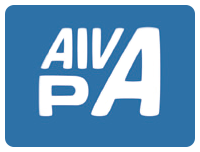Migliorare le qualità di vita
Management nutrizionale del paziente renale
Enhancing quality of life: nutritional management of renal patients
Authors
Sanderson S.L.
The University of Georgia, College of Veterinary Medicine, Athens, Georgia
Summary
Renal disease is a common cause of morbidity and mortality in older dogs, and it occurs in approximately 20% of dogs over 5 years of age, with a mean age of 10.2 years.1 Chronic kidney disease (CKD) is the most common cause of renal disease in dogs. The most successful treatment of CKD requires a multimodal approach that involves identifying and eliminating exacerbating factors combined with appropriate dietary and medical management. Dietary management is one of the very few current recommendations for management of CKD that has grade I evidence for support. As a result, dietary management remains the cornerstone of therapy for the management of this condition in both dogs and cats. Research has shown that veterinary therapeutic renal diets are superior to maintenance diets for minimizing uremic episodes and death in dogs with spontaneous CKD. The key nutrients in the management of CKD are phosphorus, omega-3 polyunsatured fatty acids and antioxidants. A study demonstrated that, in dogs with CKD, survival was enhanced by phosphorus restriction but not by protein restriction. Another study showed that, considering fatty acids, an n-6:n-3 diet with the 5:1 ratio normalized GCP in dogs with reduced kidney function. Again, a diet supplemented with n-3 fatty acids and a diet supplemented with antioxidants, both slowed the rate of decline in GFR and t when n-3 fatty acids were combined with antioxidants the effects on slowing down the rate of decline in GFR were additive and statistically significant when compared to a control diet. In addition, dietary antioxidants have been shown to reduce the magnitude of proteinuria, glomerulosclerosis, and interstitial fibrosis in dogs with CKD. Levels of dietary phosphorus are generally closely associated with levels of dietary protein, and it has already been established that dogs with CKD benefit from a phosphorus-restricted diet. However, it is possible to formulate diets for management of CKD in dogs that are phosphorus restricted but higher in protein than what is traditionally used by choosing protein sources that are naturally lower in phosphorus content; soy isolate is one of those protein sources. However, relying solely on the kidneys to excrete urea in patients with CKD that have elevated levels of BUN is not a desirable situation, and feeding these patients higher-protein diets only exacerbates this problem. However, adding certain fiber types to the diet can direct some of the nitrogenous waste product excretion from the body to the colon in a process known as enteric dialysis. In addition, enteric dialysis allows more dietary protein to be fed without increasing the nitrogenous excretion burden on the kidneys. Provision of dietary fermentable fiber not only increases bacterial numbers but also increases the production of SCFA and health and surface area of the colonic mucosa. SCFA in turn increase the blood flow to the colon and urea presentation to the intestinal tract. Increased bacterial proliferation maintains urea concentration gradient and allows continued flow of urea from blood into the lumen, and excretion via the intestine when the animal defecates. This process allows some of the wasteful products from protein metabolism to be excreted from the body by a nonrenal mechanism.


